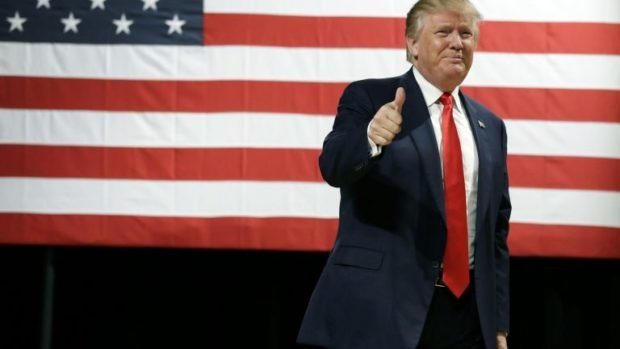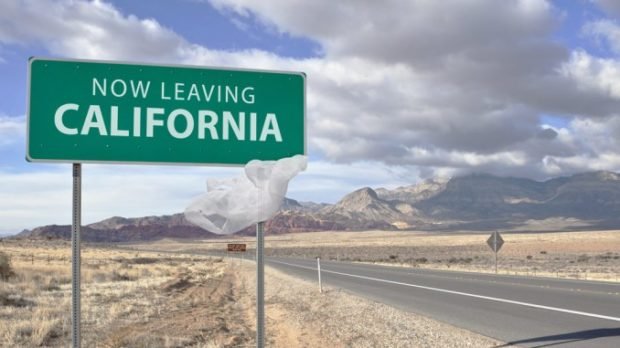Police Told Ronald Greene’s Family He Died in a Car Crash. But Video Shows He Was Tased, Dragged, and Struck by Officers Before His Death
For over a year, the official story went like this: Ronald Greene was killed in a car crash.
Greene was pursued by two Louisiana State Police (LSP) officers near Monroe, Louisiana in 2019 over an unspecified traffic violation. He fled, and the pursuit ended in a car crash. His family was told he died on impact. His mother says two officers told her he hit a tree.
But now, the Associated Press has obtained video of the event in question that portrays a very different picture.
It seems Greene did indeed flee from police and crash his car. But the footage shows he was still very much alive when police approached his wrecked vehicle.
In the film, the cops approach an SUV that appears mildly dented at the front. Their guns drawn, they immediately begin cursing at him and rip him from the car. Greene can be heard pleading for mercy.
“I’m sorry. I’m scared. Officer, I’m scared. I’m your brother. I’m scared,” he says.
Greene doesn’t appear to be a threat from this point forward, yet one officer tases him as another shoves him into the concrete and kicks him several times. “Let me see your f**king hands m*therf**ker,” an officer can be heard saying. At one point in the video, Greene’s screams and the sound of a taser being shot continuously can be heard.
Finally, the altercation appears to end. Greene is in handcuffs and placed on his stomach.
But what comes next is almost worse than the brutality observed in the first minute. “I’ve got blood all over me, I hope this guy ain’t got f**king AIDS,” a cop says in the background, as he and the others walk away to wash blood off of themselves.
According to the AP, Greene is left lying on his stomach for nine minutes during this time, despite protocols that say a person should be turned on their side or placed in an upright sitting position after such an ordeal to ensure that they can breathe.
When police return to Greene (who is notably trying to turn on his side), an officer uses his boot to shove him back down into the concrete before dragging him by his legs.
High-ranking State Police officials initially described the use of force as “awful but lawful,” according to the Associated Press. A formal administrative investigation was not opened until 474 days after Greene died.
The case is now under investigation by the US Justice Department’s Civil Rights Division, the FBI, and the US Attorney’s Office for the Western District of Louisiana, and a wrongful death lawsuit has been filed by Greene’s daughter.
Glenwood Medical Center listed the primary cause of Greene’s death as cardiac arrest in its initial report, but a doctor who examined the body noted that the two stun-gun prongs in Greene’s back undermined the officers’ claims that Greene died on impact.
“Does not add up,” the doctor wrote.
According to the lawsuit filed by Greene’s family, he was also diagnosed with an “unspecified injury of head.”
CNN reports that “two officers involved in the incident were reprimanded for their actions that night two years ago…(and) a third officer—who was heard in an audio recording last year describing beating ‘the ever-living f***” out of Greene’—died in a single-vehicle crash in September.”
Film the Police
The release of the video has brought increased attention to the incident, and for good reason. But as was the case in numerous other high profile deaths (George Floyd and Ahmaud Arbery most recently), without such documentation it’s unlikely the public would ever know the true circumstances surrounding Greene’s death.
The officers lied in their report and to the family. Without this footage, obtained through body cameras, it is unlikely there would have been rigorous review of the incident or pushback on the narrative of law enforcement. The necessity of body cameras is on full display here.
But the effort to mandate body cameras for police has been an arduous task across the country. Police and their unions push back heavily on such measures in state legislatures and at city councils. And even when implemented, many officers continue to turn their cameras off with few repercussions as a result. (Even in Greene’s case, two of the officers had their cameras turned off.)
Furthermore, obtaining such video evidence is often an uphill battle. Departments work tooth and nail to block access to body camera footage, and even when it does emerge, it’s often after a case concludes. In Greene’s case the footage was leaked, not released.
“[P]remature public release of investigative files and video evidence in this case is not authorized and … undermines the investigative process and compromises the fair and impartial outcome,” LSP said in a statement.
This is a scandalous case, but what makes it even more appalling is the realization that whatever future discipline the police officers face—if any—it almost certainly would not have occurred in the absence of the video. The reality is that body cameras are an important tool in our work to produce accountability, but they’re often not enough.
The Problem with Power
The US has had quite the awakening on policing in recent years. In fact, most Americans now say policing needs major changes. But the status quo is not without its apologists. That camp frequently tries to dismiss horror stories, such as Greene’s, as isolated incidents and the responsibility of a few “bad apples.”
It is true that there are many police officers who are seeking to do the right thing and who enter the force with the intention to protect and serve. The vast majority of police officers are never caught brutalizing our citizens as the cops in this video did.
But such dismissals gloss over an essential question: is there a systemic problem in the institutional framework of policing that is promoting the spread and persistence of rot in the apple barrel? Systemic issues that prevent the removal of bad apples, that attract problematic people to the profession in the first place, or that ultimately turn the good apples bad from exposure?
The answer to that question is that there certainly is. And the problem boils down to one word: impunity. That is, the exemption of officers from accountability for violating the very rights of the citizenry that they are charged with protecting.
That lack of accountability is baked into our policing system in two major ways.
First, there is the Supreme Court doctrine of qualified immunity (QI). QI is the result of judicial activism and is not based on any actual constitutional grounds. They literally invented it. Under QI, government actors cannot be sued when they violate a person’s rights unless a court ruled the very same action was unconstitutional in a prior case. That creates a nearly impossible standard based on a Catch-22. New cases cannot move forward in the courts because old cases could not move forward in the courts.
If you or I were to harm someone we could be held financially responsible, and this fact is a powerful one that ensures the vast majority of people go out of their way to prevent causing harm to others. But for police and other government officials, the US has removed this essential check on power.
Now consider what this doctrine does: it places government officials above the law. That means it is much harder to fire them, for one. If a court cannot prove an official acted in a way that violated someone’s rights, then their employer often does not have the grounds to fire them. They remain innocent under the eyes of the law.
And think: who would be attracted to such a situation? Those who desire power and to lord it over others will be drawn to employment where they can act without consequences. Indeed, even those who enter government positions with the best of intentions will eventually be tempted to indulge in violent or corrupt impulses because they know they are shielded from responsibility for those actions. This is how qualified immunity breeds moral rot in the law enforcement “apple barrel.”
Qualified immunity is bad enough, but when coupled with the presence of public sector unions it creates a system where it is virtually impossible to place checks and balances on law enforcement officers.
Public sector unions are a blight on our country no matter which industry we are discussing. They enable government officials to take the taxpayers’ dollars and use them to lobby against the people for less accountability and more authority. But within policing, where the government actors have the authority to take our liberties and even our lives, these unions are especially problematic.
The presence of public sector unions make it almost impossible for police departments to fire bad cops or hold them accountable in any meaningful way. That’s thanks to powerful union contracts, past labor legal precedents, and state and local laws (laws unions usually lobbied for in the first place). These processes are overly favorable to the individual officers and costly to departments that seek to rid themselves of problematic people.
Daniel Oates, a former police chief, told The Washington Post, “In nearly nine years as chief in Aurora, Colo., I had 16 cops out of 650 whom I felt should be fired. Four I actually did fire. The Civil Service Commission promptly reversed me on three of them. So with the other 12 cops, I bent over backward to negotiate their departures with creative severance packages. I succeeded in getting them out — with deals that protected the city from litigation — but these agreements also allowed the cops to get jobs elsewhere if they could.”
Police unions present the very same issues and bad incentives that we see under qualified immunity. They prevent the removal of bad apples from the system. They also create institutional environments that attract the bullies and people seeking ultimate power in the first place. Their policies also can turn good apples bad with the assurance that officers are secure in their jobs no matter what they do. And police unions frequently even push the “good apples” out of the profession by punishing whistleblowers.
If we want fewer “bad apples” in the police force, we must stop putting cops in a rotten barrel: in the corrupting institutional framework created by qualified immunity and police unions.
Impunity is power. And as the English historian and writer Lord Acton famously wrote, “Power tends to corrupt, and absolute power corrupts absolutely.”
This article was originally published on FEE.org



